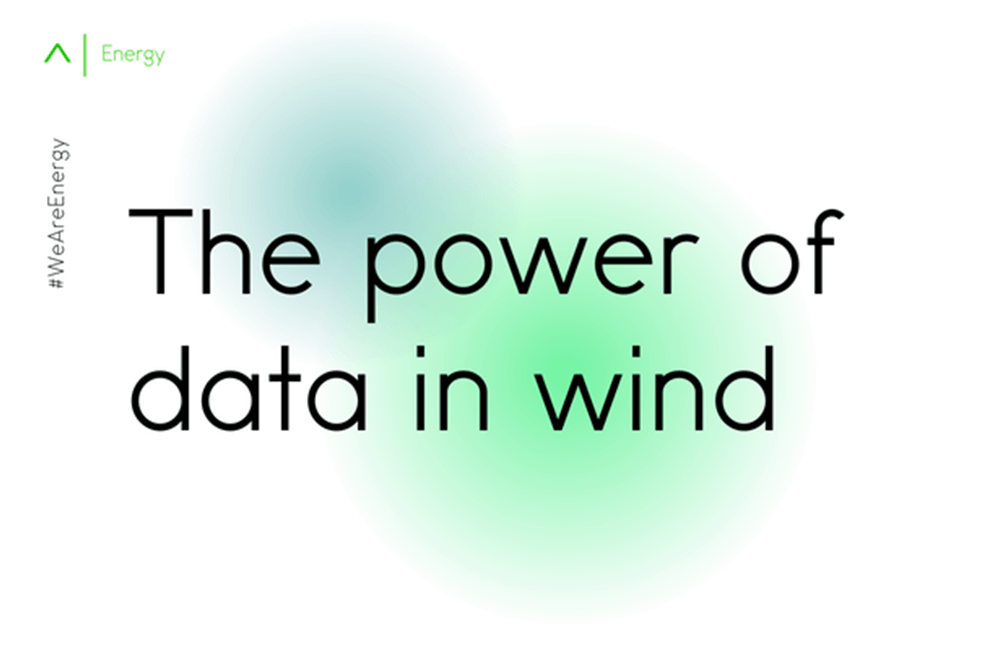The power of data in wind
26 Apr, 202210 minsThe UK now relies less on the oil and gas beneath the North Sea and more on the wind that bl...

The UK now relies less on the oil and gas beneath the North Sea and more on the wind that blows over it, using data and software to plan, run and maintain growing numbers of offshore wind turbines.
In 2020, 4% of the UK’s power came from wind. This represents a tenfold increase in wind power since 2010 as part of the UK’s green energy transition. And over half of that was generated offshore, partly thanks to the completion of Hornsea One, the world’s biggest offshore wind farm, off the Yorkshire coast.
Hornsea’s Danish operator, Ørsted, is planning to open an even bigger wind farm this year, Hornsea Two, followed by a third and fourth. Together they would cover almost 800 square miles of the North Sea.
Many more wind farms are also planned, with Crown Estate Scotland announcing agreements covering over 2,800 square miles of sea in January, with a total generating capacity two and half times that of all the UK’s current offshore turbines.
Wind looks set to keep growing thanks to the historic rise in gas prices after the invasion of Ukraine and the UK government’s decision to stop importing Russian oil and gas.
Worldwide, 350,000 wind turbines are already installed, with over 650,000 MW of generation capacity. While the green transition will continue to drive demand, and wind is already one of the most economical energy sources, the industry needs to focus on efficiency to reduce costs further as subsidies for wind power are phased out.
Life Expectancy of a Wind Turbine.
Wind turbine life spans vary, but most failures occur during the first three years. Once they make it that far, wind farms tend to expect 20-25 years of service before they need to be refurbished or replaced.
At every stage of the turbine life cycle, it's important to take action to prevent as many failures as possible.
Electrical components count for the majority of turbine outages, but these outages are usually brief. Preventing mechanical failures is a much higher priority as they tend to cause significantly more downtime.
Because all maintenance costs money, it's important to foresee potential problems down the road.
Savvy use of software can help technicians anticipate issues without over-relying on expensive sensors. For instance, changes in oil temperature can be a clue that some part of the turbine is vibrating more than it should and needs pre-emptive attention.
Experts estimate that wind energy providers spent $8.5 billion on emergency repairs in 2019, making it the costliest aspect of running a wind farm. Using data to predict component failures can help reduce these costs and make the overall operation more efficient.
Reducing Costs, Boosting Performance.
Machine learning (ML) can be used to cut the cost and complexity of operating and maintaining wind turbines. ML and real-time data analysis can also be used to optimise energy production, forecast weather, and manage demand response and predictive equipment maintenance, among others.
Utilities, transmission companies, grid operators and other electric industry entities are already using predictive analytics to reduce downtime, improve operations and maximize revenues. Newer technologies like Internet of Things (IoT) sensors, supercharged AI-based analytics, and stream processing technologies are now enabling energy producers and providers to boost efficiency and respond better to customer and regulatory demands.
The energy sector has an unprecedented opportunity to transform itself through these new technologies, which are critical to bringing energy into the digital era and creating a more affordable, accessible, sustainable and reliable infrastructure.


